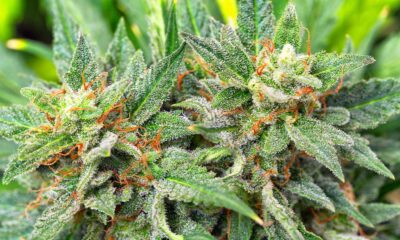
Joint Opinions
The Return of Reefer Madness
There was a time not so long ago, around the turn of the 1930s, when the federal government embarked on a staunch mission to spread propaganda in an effort to swindle the average citizen into believing that marijuana was the ultimate scourge on society – this would be the beginning to the second coming of prohibition. To assist in spreading this plague of misinformation, the devious bastard we all know as Uncle Sam enlisted the largest newspaper chain in the country, which was owned by William Randolph Hearst – the character inspiration for the lead role in Orson Welles’ 1941 dramatic film, “Citizen Kane.”
Within the pages of Hearst’s newspapers, the editorial team began running racist stories that suggested that cannabis was making white women promiscuous towards black and Hispanic men and that brown drug dealers were turning the youth of the nation into full-blown marijuana junkies.
Interestingly, although today’s society has very little tolerance for the racist swill of the Great Depression era, the federal government still prides itself in contributing to modern day reefer madness in an effort to keep public opinions from swinging too much toward the halls of change. Yet, instead of the propaganda machine cranking out articles aimed at frightening rich, white men into believing that their wives are at home stoned and having extramarital experiences with well-endowed men of color, their solider agencies simply resort to distributing pseudo-science and biased health studies that are purely speculation, at best.
Some of the latest research from the National Institute on Drug Abuse (NIDA), which was published in a recent edition of The New England Journal of Medicine, is yet another feeble attempt to con the press into spreading horrifying headlines about how marijuana makes dope fiends out of American children. Within this humorous report, researchers indicate that adolescent pot use continues to skyrocket — with the largest demographic of potential pot addicts being those 12 or older. A rather broad range, no?
Nevertheless, the study finds that marijuana is a detriment to the future leaders of tomorrow because it comes with a whopping 9 percent overall addiction rate – 16 percent for those who start smoking weed as teenager and 25-50 percent for daily tokers.
“As compared with persons who begin to use marijuana in adulthood, those who begin in adolescence are approximately two to four times as likely to have symptoms of cannabis dependence within two years after first use,” researchers wrote.
Marijuana addiction is controversial subject matter simply because there is not enough evidence to suggest that the dreaded marijuana monkey even exists… in adults or children. Hell, not even the federal government can conjure up enough negatively-skewed research to indicate that weed has anything more than a 9 percent addiction rate, which incidentally, is the same as one of America’s favorite legal drugs – caffeine. Yet, we are not seeing the feds releasing too many all-important studies warning society of the risk factors associated with children consuming an overabundance of energy drinks or soda.
That’s because as much as the government would like to convince the American population that they are looking out for their health and safety, nothing could be further from the truth. Uncle Sam doesn’t care who gets addicted to drugs in this country, otherwise they would pay closer attention to what’s going on in the realm of alcohol, tobacco and prescription drugs.
In spite of the American trinity of legal substances having far more impressive addiction rates than cannabis and continuing to contribute to the deaths of nearly 700,000 people every year, the population is still forced to listen to federal health agencies dramatize the fabulous concept of pot addiction.
“It is important to alert the public that using marijuana in the teen years brings health, social, and academic risk,” lead author and NIDA Director Nora D. Volkow, MD, said in a statement. “Physicians in particular can play a role in conveying to families that early marijuana use can interfere with crucial social and developmental milestones and can impair cognitive development.”
Insanely enough, this hypocritical hogwash doesn’t just come from the United States government – the result is sometimes much worse when it’s produced by other countries. For example, the National Drug and Alcohol Research Centre at the University of New South Wales in Australia recently determined that teens who use marijuana before the age of 17 have more than a 60 percent less chance of graduating high school than their straight-edge counterparts. The study goes on to say that pot smoking teens are 18 times more likely to be swallowed by addiction and seven times more likely to kill themselves.
“The results provide very strong evidence for a more direct relationship between adolescence cannabis use and later harm,” said the study’s lead author. “The findings are particularly timely given the growing movement to decriminalize or legalize cannabis because this has raised the possibility the drug might become more accessible to young people.”
However, as Mason Tvert with the Marijuana Policy Project points out, the study actually has nothing to do with marijuana leading to these types of suicidal misfortune, but rather it details a coincidental link between marijuana users and individuals who are destined for these types of troubles.
“The article expressly states that there remains no evidence that using marijuana causes depression, suicide or dropping out of school,” he said. “It simply shows that teens who are prone to developing these problems are more likely to have used marijuana.”
Unfortunately, this won’t stop a myriad of panicked parents, teachers and pot opposing enthusiasts from twisting this data into further misinformation against the already slandered name of marijuana. Yet, these people will not take into consideration that alcohol, tobacco and prescription drugs have been — and likely always will be — getting teenagers hooked on feel-good lifestyles that will likely contribute to their demise.
In the end, the risk of marijuana addiction in teens or adults is an illusion to keep prohibition profitable.
What do you think of the results of the study? Let us know your thoughts in the comments below.


























